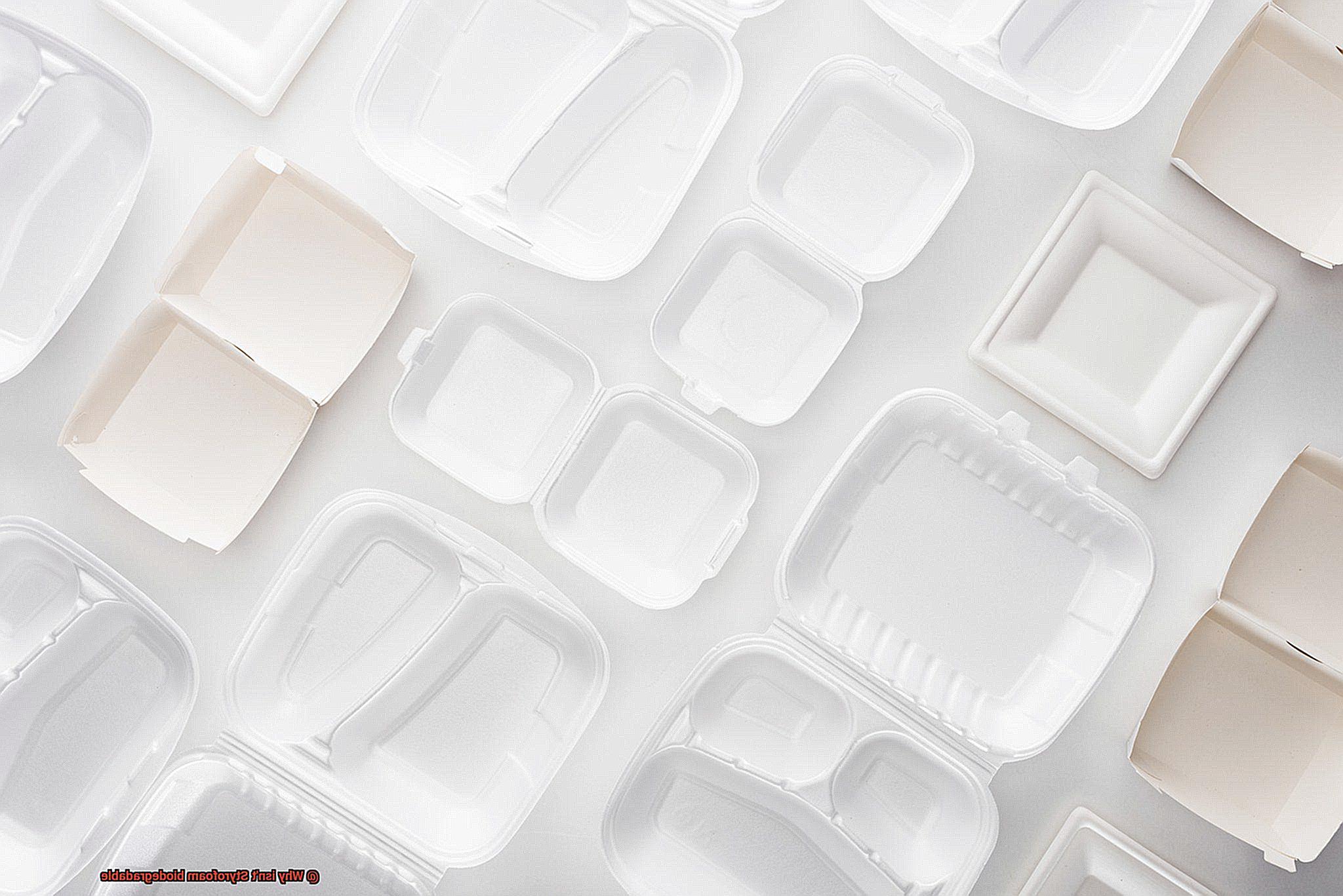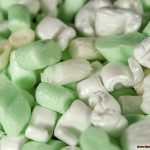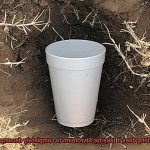Imagine yourself on a pristine beach, the sun beating down on your skin and the salty breeze in your hair. You’re enjoying the tranquility of the ocean when suddenly, you see small pieces of foam floating on the water. That’s Styrofoam for you – a material that has been around since the 1940s but is notorious for its impact on our environment.
Styrofoam may seem like an affordable and convenient material, but it comes with a high cost to our planet. One of the most significant issues with Styrofoam is that it’s not biodegradable. Its complex structure makes it challenging for microorganisms to break down, making it one of the most persistent pollutants in our environment.
The reason behind this lies in its composition. Styrofoam is made up of polystyrene, a type of plastic with long chains of molecules that provide it with unique properties such as being lightweight and insulating. However, these same properties make it incredibly difficult for natural bacteria to break down, leading to hundreds of years of pollution in our oceans and wildlife.
But that’s not all – the manufacturing process of Styrofoam also releases hazardous chemicals into the environment, leading to air pollution, water pollution, and increased greenhouse gas emissions. The negative environmental impacts are clear and demand sustainable alternatives.
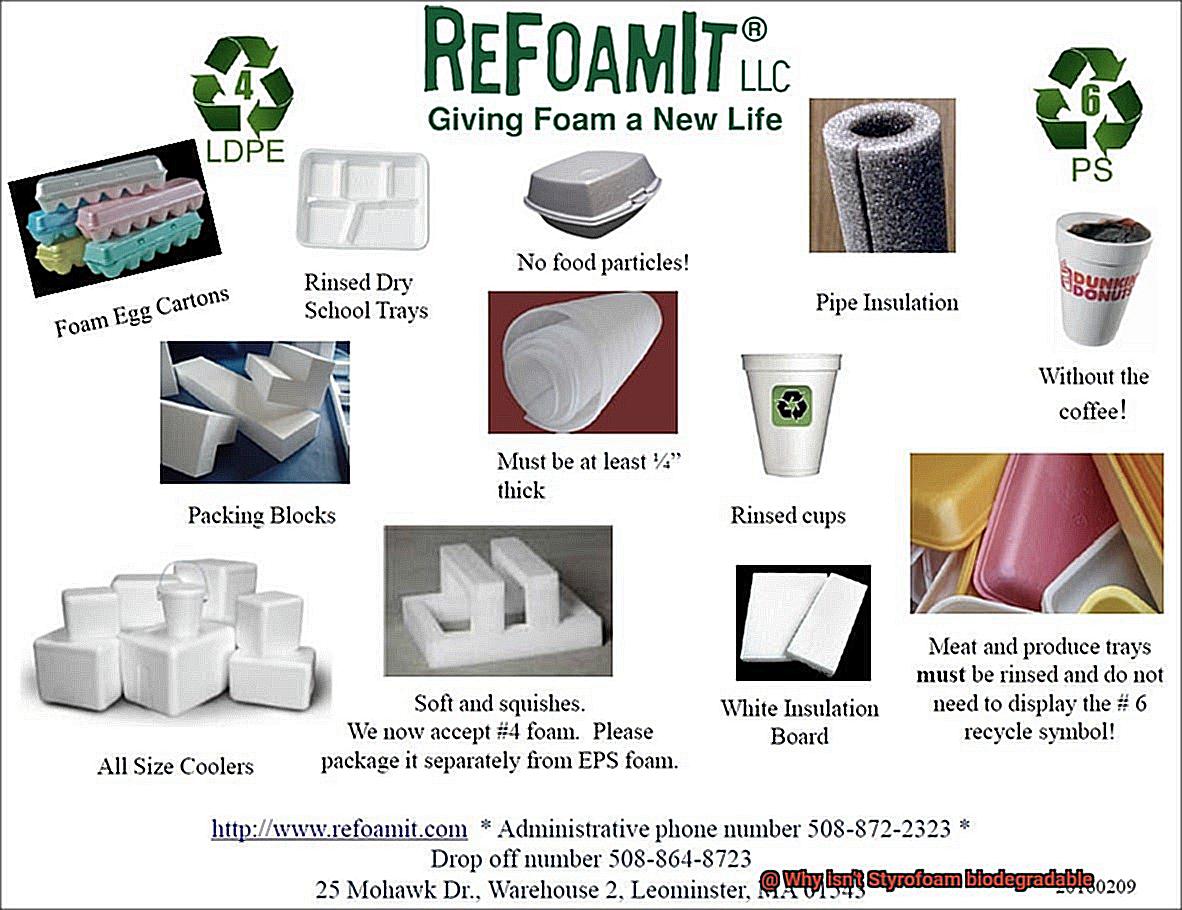
In this blog post, we’ll explore why Styrofoam isn’t biodegradable and how it’s impacting our planet. We’ll also look at some sustainable alternatives that can help reduce its impact on our environment.
What is Styrofoam?
Contents
This ubiquitous plastic foam is found in everything from coffee cups to packaging materials and has become a staple in many industries due to its lightweight, durable, and waterproof properties. However, Styrofoam’s impact on the environment is cause for concern, as it is non-biodegradable and can persist in the environment for hundreds or even thousands of years.
Styrofoam is made from polystyrene, a petroleum-based material that is created through polymerization. During this process, styrene molecules are linked together to form long chains of plastic that are highly resistant to natural degradation processes. To create Styrofoam, polystyrene beads are heated until they expand and fuse together into a foam material with many desirable properties.
Despite its usefulness, Styrofoam poses a significant threat to the environment. As it cannot be broken down by natural processes like bacteria or fungi, it can accumulate in landfills, oceans, and other natural habitats, harming wildlife and ecosystems. It’s important to note that expanded polystyrene (EPS), which is used in products like coffee cups and packing peanuts, shares many of the same environmental issues as Styrofoam.
While there are some limited recycling options available for EPS and Styrofoam, finding alternative materials that are more sustainable and eco-friendly remains a critical challenge. As consumers and industries continue to seek more sustainable options, it’s essential to stay informed about the materials we use and their impact on the environment.
What Makes Styrofoam Non-Biodegradable?
Styrofoam, a plastic material made from polystyrene, is renowned for its thermal insulation properties and lightweight nature, making it a widely used material in day-to-day items like coffee cups and packaging materials. However, it poses a significant threat to the environment due to its non-biodegradable nature. But what exactly makes Styrofoam non-biodegradable?
The answer lies in its chemical structure. Styrofoam is composed of long chains of tightly packed molecules that make it difficult for microorganisms to break them down. Moreover, the material is resistant to natural solvents like water, making it impervious to easy decomposition.
Styrofoam’s slow degradation rate also contributes to its non-biodegradability. It can take up to 500 years for Styrofoam to decompose in a landfill, during which time it can release harmful chemicals into the environment, including styrene, which has been linked to cancer and other health problems.
The combination of its chemical structure and slow degradation rate makes Styrofoam one of the most persistent and damaging types of plastic waste in the environment. Finding alternative eco-friendly materials is critical. While efforts are being made to reduce its use and find alternatives, urgent action is needed to address this major environmental concern.
The Impact of Non-Biodegradable Styrofoam on the Environment
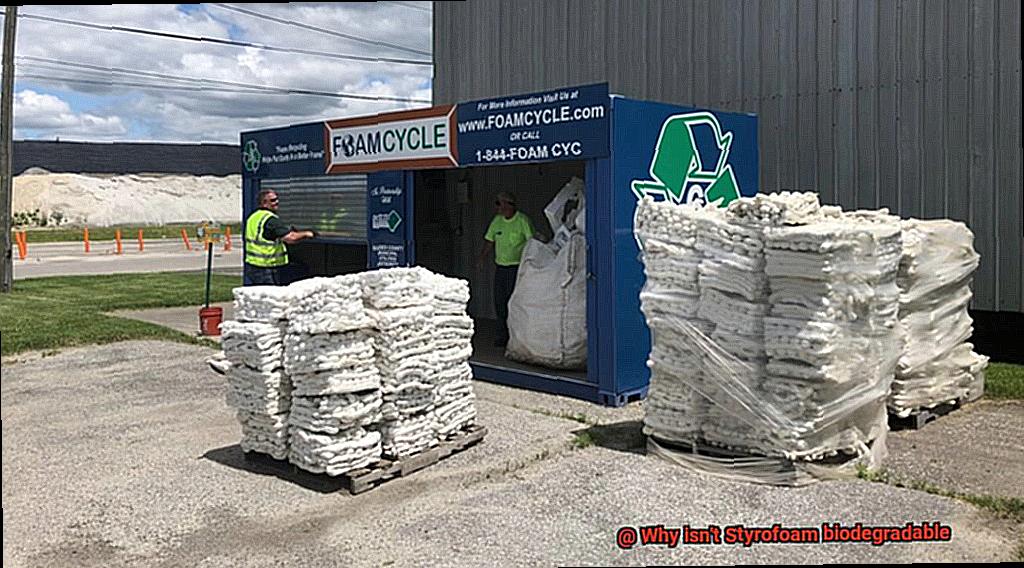
It takes hundreds of years for Styrofoam to decompose, which means that it stays in landfills and oceans for an extended period, polluting the environment.
One of the most alarming consequences of non-biodegradable Styrofoam is its contribution to plastic pollution in the oceans. Studies have shown that large amounts of Styrofoam end up in rivers and oceans, where they pose a severe threat to marine life. Marine animals can mistake Styrofoam for food, leading to choking, digestive problems, and even death.
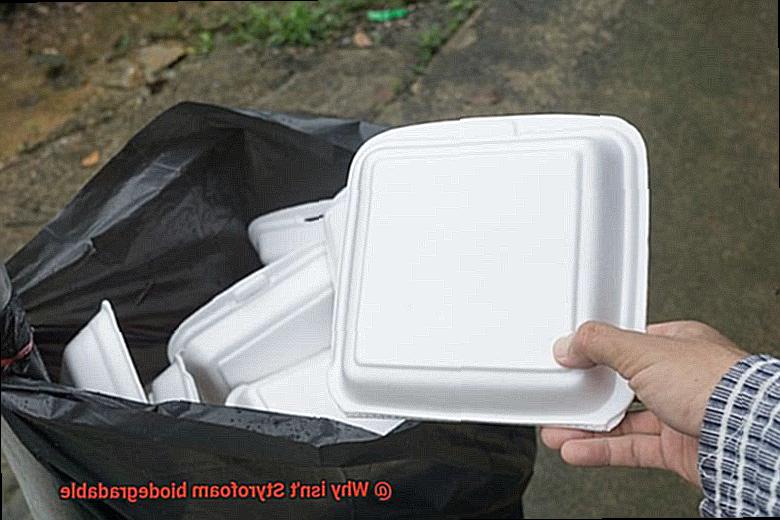
Moreover, non-biodegradable Styrofoam contributes significantly to greenhouse gas emissions. When burned, it releases toxic chemicals into the air, causing respiratory problems and other health issues. Furthermore, when non-biodegradable Styrofoam breaks down in landfills or the environment, it releases methane gas, a potent greenhouse gas that contributes to climate change.
Furthermore, non-biodegradable Styrofoam is a significant problem for waste management systems. Its lightweight nature makes it difficult to manage in landfills as it can easily be blown away by wind or water, littering public spaces and posing a risk to wildlife.
Alternatives to Styrofoam
While it’s a popular material used in food containers, the fact that it takes hundreds of years to decompose leaves a lasting negative impact on the environment. That’s why it’s crucial to find sustainable alternatives that are biodegradable or recyclable.
One such alternative is paper-based products. Made from renewable materials, they are not only biodegradable but also recyclable. This makes them an excellent choice for disposable plates, cups, and food containers. Plus, they’re perfect for those who want to reduce their carbon footprint.
Another sustainable option is plant-based plastics. These plastics are made from renewable resources like corn or sugarcane and are both biodegradable and compostable. They can also be used in the production of disposable cups, plates, and food containers without harming the environment.
Biodegradable plastics are also a great alternative to Styrofoam. They’re designed to break down in the environment over time, which reduces their impact on nature. You can use them for disposable cups, plates, and food containers without worrying about polluting the planet.
Finally, reusable containers made from glass or metal are another fantastic alternative to Styrofoam. Although they require a bit more maintenance than disposable options, they are an eco-friendly choice that eliminates waste in the long term. Plus, they don’t contribute to environmental pollution and can be used multiple times.
How to Properly Dispose of Styrofoam
Styrofoam, also known as expanded polystyrene (EPS), is a widely used plastic material due to its lightweight and insulating properties. However, it poses a significant threat to the environment and wildlife because it is not biodegradable. Styrofoam takes hundreds of years to break down and can cause harm to ecosystems and wildlife. In this blog post, we will discuss how to properly dispose of Styrofoam in five sections.
Understanding the Harmful Effects of Styrofoam on the Environment
Styrofoam is not biodegradable because it is made from a petroleum-based plastic. This means that it cannot be broken down by natural processes, leading to pollution and harm to the environment. When Styrofoam breaks down, it only turns into smaller pieces known as microplastics that can cause significant harm to wildlife and ecosystems. Additionally, Styrofoam releases toxic chemicals such as styrene and benzene when exposed to heat or fire, which can have harmful effects on human health.
Recycling Styrofoam
Recycling Styrofoam can be a challenge since it cannot be recycled in the traditional sense. However, there are specialized recycling facilities that can process Styrofoam and turn it into new products such as picture frames, rulers, and even surfboards. To recycle Styrofoam, check with your local recycling center to see if they accept it or if there are any specific guidelines for preparing it for recycling. If your local recycling center does not accept Styrofoam, you can also contact a mail-back program or look for drop-off locations at local stores or events.
Alternative Materials to Styrofoam
Reducing the use of Styrofoam is another way to properly dispose of it. One alternative material to Styrofoam is paper-based packaging materials that are biodegradable and compostable. Another alternative material is bioplastics made from renewable resources such as cornstarch or sugarcane. Using reusable containers instead of disposable Styrofoam containers can also significantly reduce the amount of Styrofoam waste produced.
Why Burning Styrofoam is Dangerous
Burning Styrofoam is not a safe or effective method of disposal. When burned, Styrofoam releases toxic chemicals into the air that can be harmful to human health and the environment. It is important to always properly dispose of Styrofoam in the trash instead of burning it.
The Importance of Proper Disposal of Styrofoam
Strategies for Reducing the Use of Non-Biodegradable Packaging
It’s important to recognize that non-biodegradable packaging materials such as Styrofoam can pose significant threats to the environment due to their inability to decompose naturally. However, we can make a difference by taking action and promoting eco-friendly alternatives.
One approach is to promote the use of biodegradable alternatives such as paper or plant-based materials. These options can be just as effective as non-biodegradable materials while also being more environmentally friendly. Encouraging companies to use sustainable and eco-friendly packaging can lead to a shift in the industry towards more responsible practices.
Another excellent strategy is to implement recycling programs for non-biodegradable packaging. This can be done through curbside recycling programs or local drop-off locations. Proper disposal of non-biodegradable packaging through recycling can significantly reduce the amount of waste that ends up in landfills and oceans.
Lastly, education and awareness campaigns are a powerful tool to help reduce the use of non-biodegradable packaging. Teaching individuals about the negative impact these materials have on the environment, and providing them with alternatives and solutions, can help promote a more sustainable and responsible approach towards packaging.
-SUJzbb__TY” >
Conclusion
In conclusion, Styrofoam may have been a convenient and popular choice for packaging materials due to its insulating and lightweight properties, but it has a detrimental impact on our planet. Its non-biodegradable nature means that it can take hundreds or even thousands of years to decompose, polluting our oceans and wildlife in the process. The complex structure of Styrofoam makes it challenging for microorganisms to break down, leaving us with long-lasting pollution.
Moreover, the manufacturing process of Styrofoam emits hazardous chemicals into the environment, leading to air pollution, water pollution, and increased greenhouse gas emissions. It’s clear that we need sustainable alternatives to reduce Styrofoam’s impact on our environment.
Thankfully, there are eco-friendly alternatives available such as paper-based products, plant-based plastics, biodegradable plastics, and reusable containers made from glass or metal. Additionally, proper disposal of Styrofoam is crucial as burning it releases toxic chemicals into the air that can be harmful to human health and the environment. Recycling programs for non-biodegradable packaging materials like Styrofoam can significantly reduce waste in landfills and oceans.
Education and awareness campaigns are also essential tools in reducing the use of non-biodegradable packaging materials like Styrofoam. By promoting eco-friendly alternatives, implementing recycling programs, and educating individuals about their negative impact on the environment; we can all contribute towards a more sustainable future.
